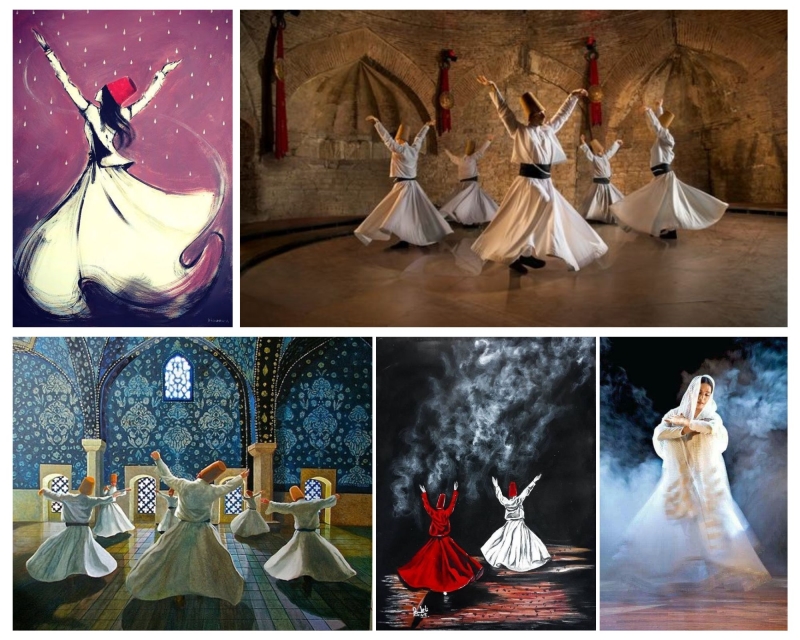A world of mystical music - SUFI

What is Sufi Music?
Its the rhythms of life, the heartbeat and breath, as a Divine Art. Rhythmic dancing, whirling, poetry and chanting of religious texts combine to induce an ecstatic state, at the climax of which the participant 'may see God'. It is a joyful celebration of the Divine and of universal oneness.
Sound and music is thus central for the core experience of Sufism, since music is regarded as a means for the believer to get closer to the divine. Sufi music therefore is the music of the 'soul' by the 'soul' and for the 'soul’.

One of the better-known sub-genres of Sufi music is called qawwali, which has its roots in India and Pakistan. Traditionally, this style consists of four distinct sections: hamd, naat, and manqabat, which are all devotional songs, and ghazals, which are usually expressions of the longing to be close to the divine.
The popularity of qawwali is due in part to its aesthetic appeal. Many musicians that perform this type of Sufi music focus on vocal strength and purity, and may occasionally skip over the devotional material, going straight into the ghazal songs.
•Hamd - to praise God
•Naat - an expression that praises Prophet Muhammad
•Marsiya - a poem written to commemorate the valor and martyrdom of Hussain ibn Ali (as),who was the grandson of the Prophet
•Ghazal - a poetic expression in Farsi, Urdu, and Arabic
•Manqabat - a devotional poem that praises Ali Ibn Abi Talib, who was the son-in-law of the Prophet
Another popular sub-genre is known as kafi. This style is considered classical and is generally culled from the poetic verses of well-known writers. Though kafi is like qawwali in the fervor of its delivery, the two forms differ in execution. While qawwali may be made up of a larger ensemble, kafi music usually consists of a few percussion instruments, a keyboard, and a single vocalist.

A common identification of Sufi music is with whirling dervishes spinning their bodies undergoing a trance like dance. The performance is part of a ceremony which involves Sama (listening) and Dhikr. The attempt is to attain Kemal (source of all perfection) and in the process melt one’s attachments and ego. The music is seen as a form of meditation with the dance consisting of repetitive circles symbolic of planets orbiting the sun. These dances, in their original form are carried out in three stages in which a whirling dervish first appears clothed in black (symbolizing darkness), then in red (search for liberation), and finally in white (attained liberation).

Despite the fact that most Sufi devotional music is set in a classical style, some artists have developed a more modern approach. During the early 1990s, the term "Sufirock" was invented. This style generally blends rock music with traditional rhythms, as well as the poetry of well-known Sufi writers.

Sharing some of my personal favorites from the Sufi genre -
https://www.youtube.com/watch?v=4YbAaRFk70o
Song name : Khwaja Mere Khwaja
Film: Jodhaa Akbar
Composer : A.R.Rahman
Singer : A.R.Rahman
Lyrics: Kashif
Music Director - A.R. Rahman

https://www.youtube.com/watch?v=T94PHkuydcw
Song : Kun Faya Kun
Film : Rockstar
Singer : A.R. Rahman, Javed Ali, Mohit Chauhan
Lyricist : Irshaad Kamil
Music Director : A.R. Rahman













comment:
p_commentcount